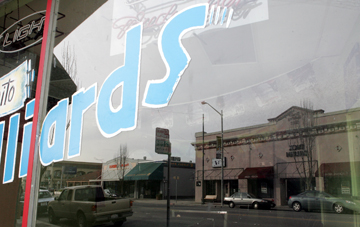Group pushing for growth cap exemption in core areas of the
city’s downtown
Residential properties will be part of the revitalization effort
in downtown Hollister if a self-appointed new urbanism committee
has its way.
Group pushing for growth cap exemption in core areas of the city’s downtown
Residential properties will be part of the revitalization effort in downtown Hollister if a self-appointed new urbanism committee has its way.
Within 45 days, members of the ad hoc group committed to a model that blends concepts collectively known as “new urbanism” will present to city council members a request for an exemption to the growth cap that residents could vote on, said Gordon Machado, a member of the group.
The exemption would appear on the ballot in June or November, he said, and only parcels in the downtown core would be eligible for the exemption.
The exemption would be needed because in 2004 voters passed Measure U, a 1 percent growth cap that limits new construction to 244 homes per year.
New urbanism seeks to recreate something old: walkable cities with a lively mix of public space, high density housing and commercial uses.
An exemption to Measure U for downtown would allow business owners and developers to build live-work units and in-fill housing in the downtown area without waiting several years for permits.
Residential housing in the downtown area is central to implementing a vision plan that the Hollister Downtown Association has been developing with RBF consulting. The plan is an outgrowth of public input following approval of a new Hollister General Plan by the city.
The goal of RBF’s plan is to move Hollister’s downtown from primarily sleepy to thriving.
Staff from RBF revealed a draft version of the vision plan less than two months ago, said Brenda Weatherly, executive director of the Hollister Downtown Association.
Mixed-use projects would be possible without the exemption, said Doug Emerson, Hollister’s mayor. An exemption would make them much easier, he said, because developers wouldn’t have to hold construction until permits became available.
“You just get a lot more lively downtown,” he said. “And when you get a lively downtown, you draw from the outlying areas as well.”
People who live downtown tend to patronize downtown businesses, Machado said. They would also be able to walk to work, he said.
Community leaders and officials agree that the most difficult part of the exemption would be how to define downtown.
“Where are you going to draw those lines?” Emerson said. “I think different people have different ideas.”
Tod duBois is a local developer. He owns a two and a half acre parcel in an undeveloped patch of Park Hill in northern Hollister.
duBois purchased the property three or four years ago, he said. Currently, duBois is planning senior co-housing with some mixed-use, live-work units, he said.
The parcel is not zoned for mixed-use, said Mary Paxton, Hollister’s planning manager.
To develop a mixed-use on the parcel, duBois would need a zoning change for his property.
Raymond Friend is a member of Hollister’s planning commission, a five-member citizen committee appointed by the city council.
“I think that’s a good spot to put mixed-use housing,” he said. “It’s within walking distance of downtown.”
The boundaries of downtown, as defined in the general plan, are convoluted, duBois said.
“City council should offer the voters something simple,” duBois said. “I have suggested North, South, East, and West.”
His property would fit within that definition, he said. The historic downtown does not, he said.
duBois changed his plans from multi-generational to senior housing due to the growth cap, he said. Measure U exempts low-income and senior housing, he said.
“I’m currently researching how that might work,” he said, referring to the exemption for senior housing.
City council should take the initiative on the exemption from the growth cap for downtown, DuDois said.
“At the next city council meeting, on Tuesday, [Jan. 22], I am going to ask city council to take a leadership role on this,” he said.
Council members should also expect to hear from the new urbanism committee.
“We’re looking at writing the exemption,” he said. “My position is that we have to paint the whole picture before we present it to city council.”










